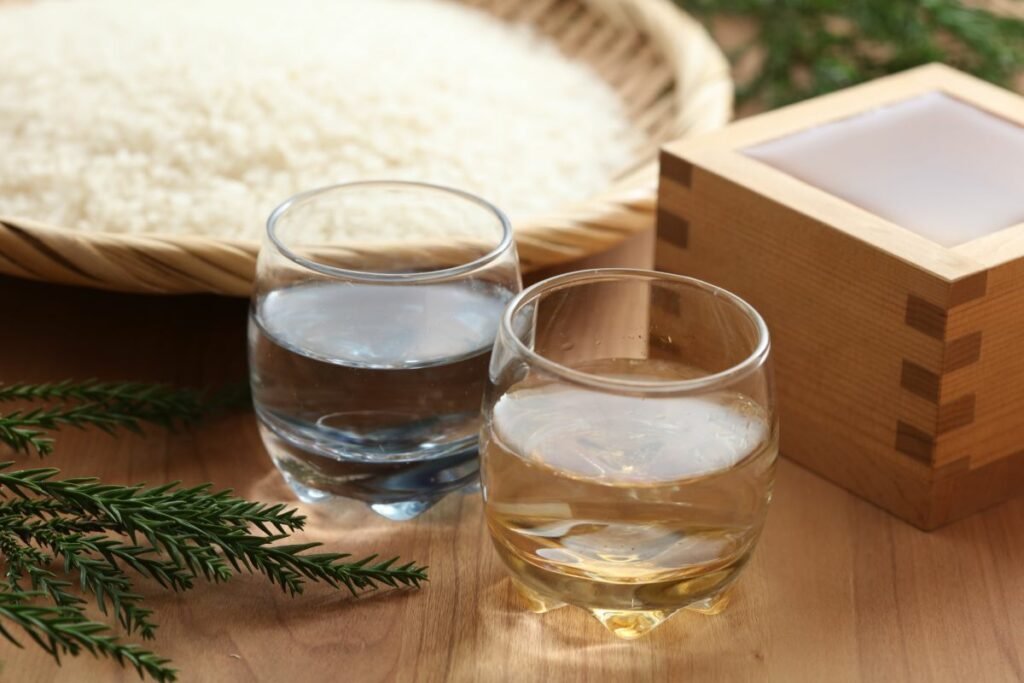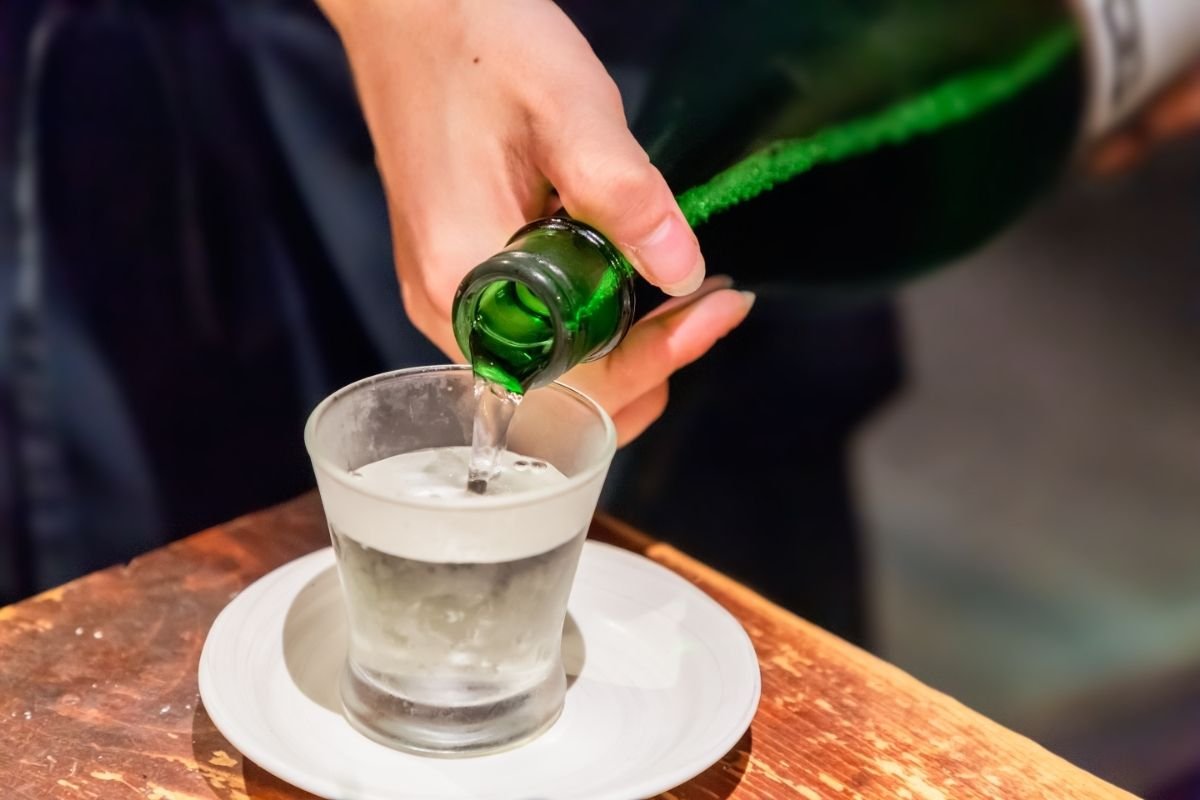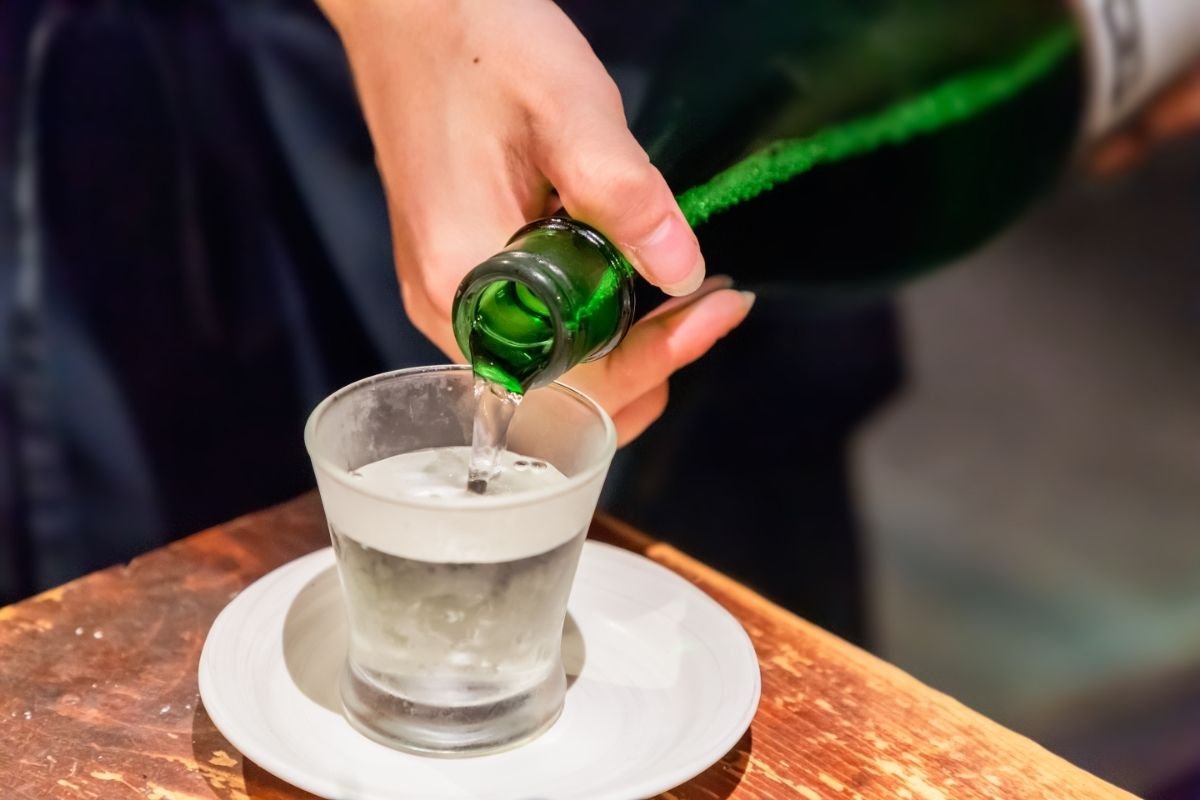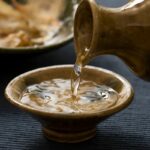Of all the alcohol in the world, there is perhaps none with as much of a long and storied history as sake – a traditional yet widely popular spirit from Japan that is now enjoyed throughout the world.
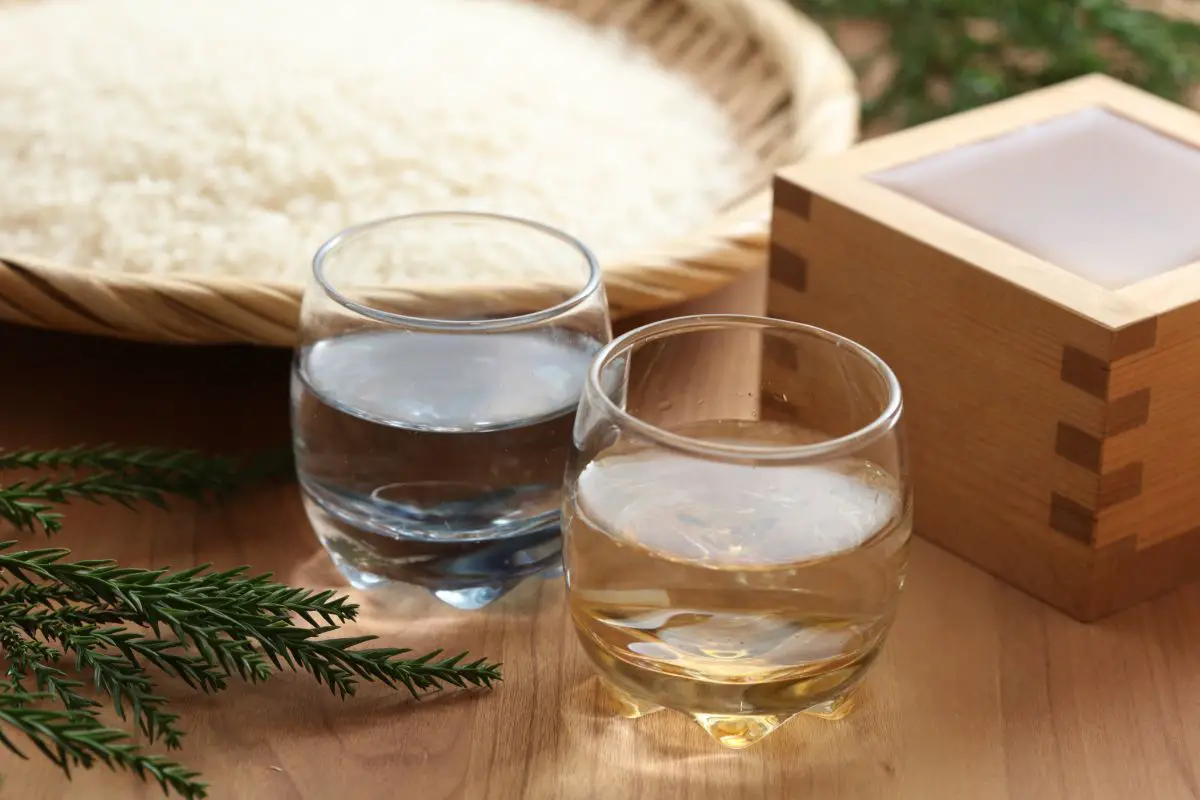
But what exactly is sake, and what different types are there?
What Is Sake?
Also known as ‘Japanese rice wine’, sake is an alcoholic beverage made from fermented rice – specifically rice that has been polished to remove the ‘bran’, otherwise known as the rougher outer layer.
While referred to as rice wine, the process of making sake is actually more akin to the brewing of beer than the fermentation of wine – and many of the processes involved are remarkably similar.
However, sake itself is actually a spirit, and one that has a complicated and long history within Japan.
The History Of Sake
While the true origin of sake has since been lost to history, it is known that the fermentation process for sake was transferred from China to Japan around the year 500 BCE – meaning that the process of creating this delicious drink actually predates the birth of Jesus Christ, the formation of the Roman Empire, and the time of Ancient Greece, making it one of the oldest alcohol making processes in the world.
However, sake as we know it today has been produced in Japan from the Nara Period, which is thought to have spanned from 710-794 AD.
Since then the process has remained fairly similar, although with each new historical period, new varieties and processes have been collected and added to the surrounding fermentation rituals.
What Does Sake Taste Like?
Sake is known for being especially smooth, and slightly sweet – packing less of a punch than other spirits and wines, and having a palatable taste somewhat similar to beer in terms of drinkability.
This is due to the high sugar content, and the low acidity, which makes the whole drink much smoother and more pleasant.
How Is Sake Made?
Generally speaking, traditional sake is made from polished rice (known as sakamai), water, Aspergillus oryzae spores (known as koji-kin), as well as various other forms of fungus and spores – including Aspergillus kawachii (white koji), and Aspergillus luchuensis (black koji).
These ingredients are then put through a rigorous process of fermentation, which involves creating an initial mash, several waiting periods, additional mashes being added, and then further fermentation over time.
This is then put through a distinct and specific distillation and purification process which creates the finished product people know and love.
How Strong Is Sake?
Generally speaking, sake tends to be similar in strength to wine – being around 15-17% alcohol. This makes it stronger than beer, cider, and some wines, but weaker than the majority of modern spirits.
What Are The Different Types Of Sake?
When it comes to sake, most brands can be compiled into five different categories – all of which refer to specific regions within Japan, and include specific ingredient combinations, and distinct processes of production.
Junmai (Junmai-Shu)
This is one of the most common varieties of sake, and is made solely from rice, koji, yeast, and water. For it to be considered Junmai sake, no other ingredients can be added to the process – which observes purity above all else.
Furthermore, Junmai sake must consist of:
- Rice that has been polished to at least 70% of the grain
- Not have brewer’s alcohol added once fermentation has ended
This is a broad term for sake, and variations do exist, which makes assigning a specific flavor tricky. However, Junmai does have a fuller body, and is somewhat more savory than other types.
Honjozo (Honjozo-Shu)
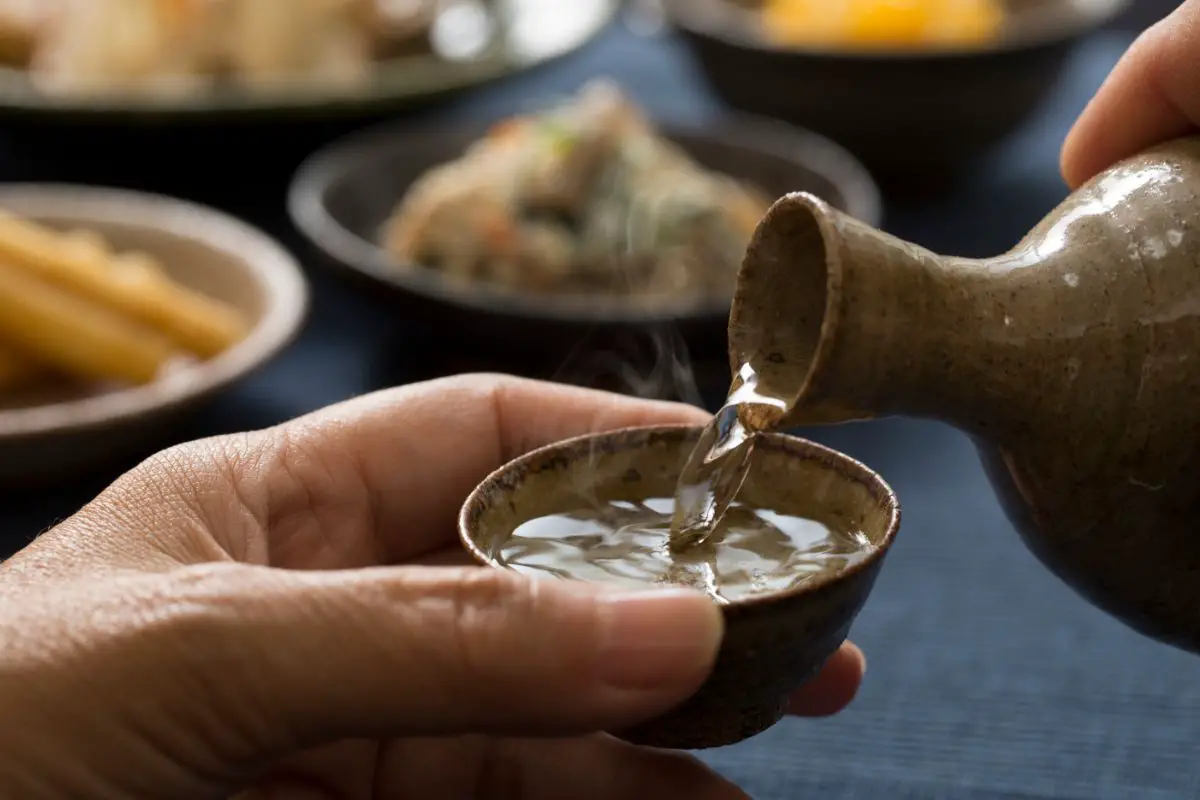
This follows many of the same processes as Junmai sake – even including the same ingredients – however, it does include brewer’s alcohol that needs to be added following the fermentation process.
This gives it a smoother and more distilled flavor than Junmai sake, and tends to be a lot better tasting and more fragrant.
This also requires rice to be 70% polished or more, and any less means it does not qualify.
Ginjo (Ginjo-Shu) And Junmai Ginjo
This sake represents the first level of what could be called premium sake – with the rice needing to be polished to around 60% of its grain at minimum.
This is a more refined process, and removes much more of the outer husk – leading to better flavors overall. This is because the outer husk can actually affect fermentation, and can lead to anomalies and worse tasting sake as a result.
This also requires colder temperatures, and uses special yeast for much longer periods than other varieties.
Fragrant, sweeter, smoother, and best enjoyed chilled, this is a firm favorite for many both in Japan and abroad.
Daiginjo (Daiginjo-Shu) And Junmai Daiginjo
With a minimum of 50% polished rice grain, this is an even more refined and premium variety of sake than the rest, and can even see the rice go as low as 23% in total. This is obviously a staggering difference from Junmai sake, and the proof really is in the pudding.
This is considered some of the best of the best in the world of sake, both in terms of taste, consistency, strength, and overall fragrant – offering a level of quality that tends to be reserved for the experts.
When talking about the difference between Daiginjo and Junmai Daiginjo, the only discernible difference is that the latter does not allow for brewer’s alcohol to be added to the process – either before or after fermentation has occurred.
Fut Shushu
The last variety is fut shushu – otherwise known as table sake. This is not considered premium in any sense of the word, and is actually one of the cheapest and lowest quality forms of sake on the market.
However, this is still popular – particularly amongst younger people – and as the name suggests, it is popular in lower class restaurants as a budget sake.
Fut shushu is characterized by a rice polishing of greater than 70%, which means that the majority of the outer husk remains on the rice.
This obviously affects the flavor in a negative way, and it is considered less sweet, more bitter, and generally less refined than the other varieties on this list.
This is also characterized by a large amount of brewer’s alcohol being added to the batch – something that, while increasing the strength, actually has a detrimental impact on the overall flavor and smell.
What Other Varieties Are There?
As well as the above mentioned main varieties of sake, there are also some others that are available on the market in various different brands.
These varieties tend to refer to certain types of sake that forsake certain aspects of the process, or otherwise adopt further processes to make themselves different. These include:
- Namazake – unpasteurized sake of all varieties
- Nigori Sake – unfiltered sake of any variety
- Organic Sake – using local ingredients, and pure methods
- Sparkling Sake – a Champagne-like variant of sake
- Jizake – various types of ‘craft’ sake (independently made)
- Koshu – aged sake (between 1 and 5 years)
- Namachozo – sake that has only been pasteurized once
- Genshu – undiluted varieties of sake
- Tokubetsu – specially lauded sake with qualifications
- Taru – sake that has been stored in cedar barrels
- Arabashiri – the first run of a batch of sake
What Is The Best Sake?
This obviously comes down to personal preference – as different people enjoy different things (usually for different reasons) – however, statistically, and based on the processes involved, the best variety of sake is Daiginjo sake.
This includes the most refined processes, the most polished rice (as low as 23%), and delivers the most well rounded, complex flavor palette of the entire list above.
This is why it is the favored variety amongst experts and tasters, and why it has set the standard for great sake both domestically and abroad.
Final Thoughts
And there we have it, everything you need to know about sake, and the different varieties that are available for people to choose from.
It is certainly true that, within Japan (and the rest of the world), sake has become increasingly popular – creating a rich, much loved spirit that can be enjoyed by people from all over the world.
So if you want to know more about the right sake for you, be sure to check out this handy guide!
Frequently Asked Questions
Now that we know more about sake, and the different varieties that are available, it is now time to answer some frequently asked questions that you might be interested in.
There are cheaper and more expensive varieties of sake available. Aged varieties tend to be more expensive, while less mature varieties tend to be more affordable.
While sake might be hard to find in more rural locations with limited range, Japanese sake is becoming more and more common in most major cities around the world.

